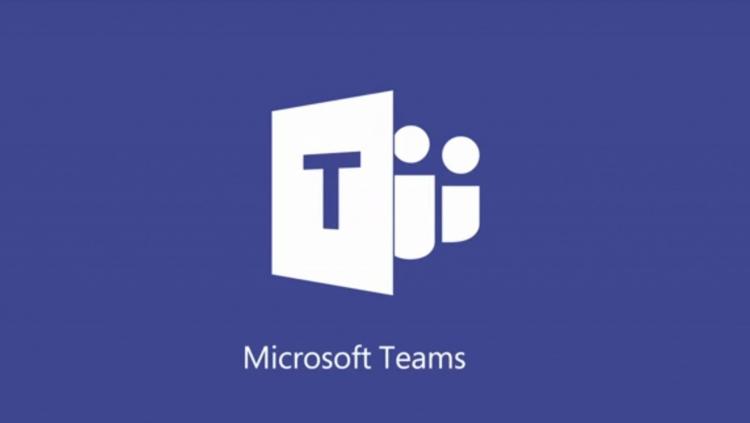This post was most recently updated on August 31st, 2022.
6 min read.Writing this in a country under lockdown, it feels like every single conference in the world has either been canceled or switched to being online-only. And right now, that’s definitely for the best! But it does pose quite a dilemma for those in charge of these events – how do you organize an event for potentially thousands of attendees, online? How do you foster great interaction between the audience and speakers? How do you encourage your attendees to mingle as well? How do you avoid total technical disasters during the sessions?
What you win in simpler logistics, you are likely to lose in tech complexity. But let’s see what we can do about it!
My experiences come from 3 years of active Teams usage (we adopted Teams in early 2017, as soon as it was available – it kept me sane when I was fully remote for the first time in my life!) and attending a number of online conferences, hosted entirely in Teams.
First, let me start with the obvious: Changing a massive in-person conference with all kinds of logistical arrangements to an online one using tools that aren’t really made for that is a recipe for disaster. If you’re in that situation right now, out might be a rough ride – but an undertaking like that is not hopeless.
However, I do want to give some tips on how to organize a conference on Microsoft Teams, based on my experiences and knowledge of the platform :)
How to organize an online conference in Microsoft Teams?
Okay – so it’s not going to be an exhaustive tutorial. But please do bear these topics in mind when organizing your event. I’ll just share my thoughts in the form of issues and proposed solutions. See them below!
Tip 1: Verify attendee access beforehand
For pretty much the first time ever, Microsoft made inviting guest users reasonably easy! But even then, some of your users will have trouble accessing your tenant, and hence your conference.
Therefore, my first tip is:
Make sure your attendees have access before you start the conference.
If you don’t, at least have a person standing by to let those with problems in. Because if people don’t have access when your conference starts, you’ll be swamped with requests to let them in.
If you can’t let people in advance, prepare your first sessions or keynote with plenty of time for people to join in.
Tip 2: Make scheduling easy!
Especially for larger conferences with multiple sessions running simultaneously, this is a big one:
Offer your attendees a convenient way to access your event’s schedule.
The session schedule is probably the single most important piece of documentation you’ll need to deliver to your attendees. If you want them to attend your sessions, that is!
You’ll need to offer your attendees a convenient way to see what’s going on and which sessions to join… And how!
How to do that, though? And more specifically, how to do that on Teams? 🤔
There are actually multiple solutions to the issue. Your external users won’t be able to access the calendar in your teams, so that’s NOT an option.
But that’s pretty much the only solution that really won’t work. You’ve got plenty of other options!
Different Solutions
Let’s start with the obvious: Use the SharePoint calendar.
The problem is, this will look awful. It’s still on classic SharePoint. However, you can just use one of the freely available, brilliant SPFx webparts to display the calendar both on Teams and SharePoint!
For the techies out there, I actually have an example of (more or less) this process here:
Alternatively, you could build a session scheduler yourself. But it’s usually not a good idea to reinvent the wheel.
You can of course always use an external tool to manage the schedule – there are plenty of these available with different levels of integration to Microsoft Teams (or other tools on Microsoft’s stack).
Anyway – take care to let your attendees easily figure out what’s going on!
Tip 3: Community building
Make your attendees feel at home, enjoy the interaction and stay even between sessions.
The (feeling of) community matters. But how do you build that when you’re missing all the face-to-face interaction?
Now, this section actually contains a couple of (hopefully actionable) small tips!
Have a community channel
This requires some effort, but based on my experience so far, having a “community channel” of sorts brings a lot of value. Your attendees (or at least a subset of them) appreciate a place where they can hang out and have a friendly chit-chat with each other. This adds a valuable layer of interaction in addition to more “official” sessions or channel discussions.
Luckily, Microsoft Teams offers a couple of nifty features to help you with this!
First of all, create a dedicated channel and have someone assume the position of “channel manager” or “master of ceremony” – they’ll be the main person monitoring the channel. This is required because there are probably going to be a lot of questions popping on this channel when people are looking for their sessions or having technical difficulties (unless you also have a dedicated channel for “event support” – which is not a bad idea either!)
You can also have non-scheduled, impromptu channel meetings just for having a coffee or discussing the weather. The problem is, even though a lot of people like these informal quick meetups, not that many people are willing to be the ones starting them – so your master of ceremony is useful in facilitating them.
And let’s not forget the virtual yoga! Or any other event that’ll bring your attendees together for something a bit more informal.
Moderate the sessions
An interactive session works far better if there’s a moderator. Without one, it’s going to be a bit awkward at best and absolute chaos at worst. The session flows far better when you have someone following the chat, picking up the questions, and distributing them to the speaker(s) when the time is right.
Without one, either the questions are going to be left unanswered, your speaker(s) will be bothered by them, or both.
Tip 4: Record and share your sessions afterward
You’ll have plenty of people asking for slides during the sessions. That’s probably going to happen anyway, but you can make a lot of people happy by providing recordings of your sessions.
However, there’s a pretty important caveat about using Teams for your conference that you need to be aware of…
Session (or meeting) recordings are not available for guest users, because Teams uses Microsoft Stream for the recordings. Hence: Record and share your sessions using another tool of choice, not just Stream.
Microsoft Stream is an awesome service, but it has its shortcomings. A pretty obvious one would be regarding external/guest users – they’ve got no access, plain and simple.
This means, that to share your session recordings with any external/guest users, you’ll need to download the recordings from Microsoft Stream and upload them somewhere else. What’s worse, downloading the recordings is only available for the owner of the meeting and the person starting the recording.
Even if your users aren’t external, browsing Stream to find the right one of the dozens of meetings with the title “Meeting in Tech Track” (recordings for channel meetings will always have a title like that – pretty painful to browse like that!)
And even if everything else goes well, Stream is not very reliable for recording what’s happening on the presenter’s screen.
Do yourself (and your speakers and attendees) a favor and at least create a backup of your session recordings in some “external” system – at least for now, Microsoft Stream is not enough alone.
Closing words
That’s all I had! I’ll be updating the post when I run into new interesting tips to share.
All things said, organizing (and attending) a conference online has many pros to it, compared to a traditional in-person event. And it definitely has the potential of being far more inclusive due to attending being easier – technical problems notwithstanding!



